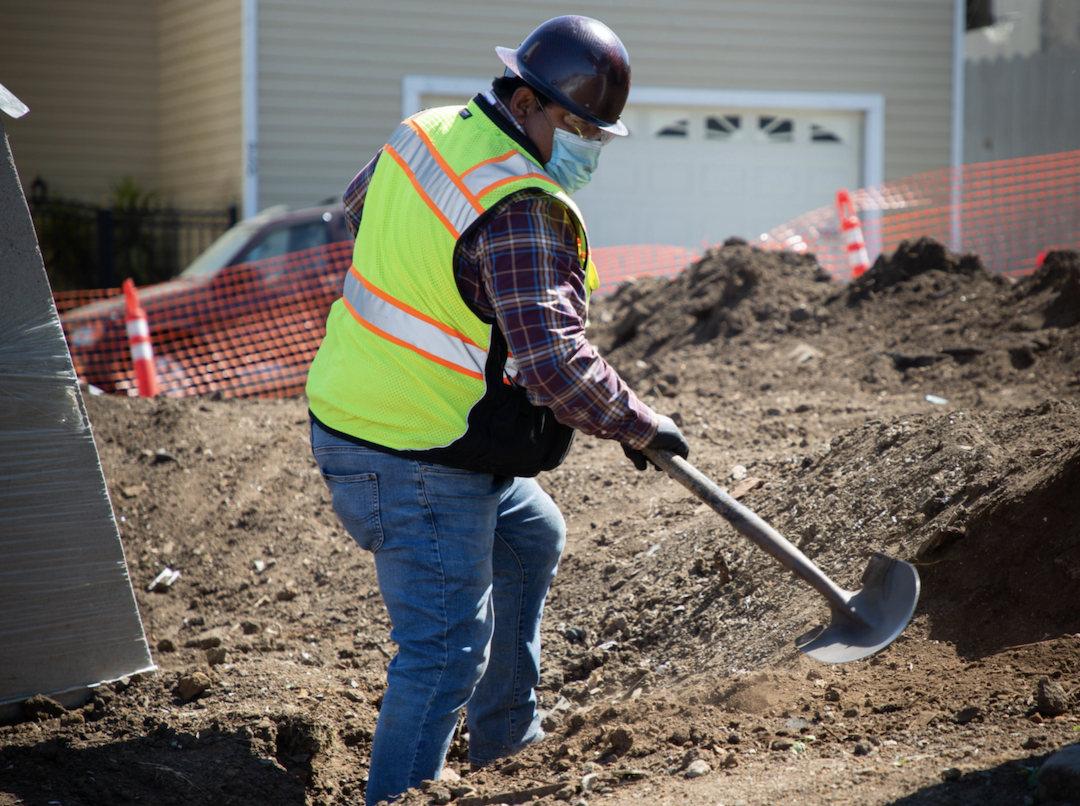Construction employment increased by 31,000 jobs between October and November as nonresidential construction firms added workers for the third month in a row, according to an analysis by the Associated General Contractors of America of government data released today. Association officials said construction firms were likely to have added even more jobs if they could find more qualified workers to hire with many firms reporting a growing number of unfilled positions.
“It is heartening to see steady job growth across all construction segments following a long period during which only residential contractors were adding employees,” said Ken Simonson, the association’s chief economist. “But record job openings show the industry needs still more workers as more types of nonresidential projects get started.”
Construction employment in November totaled 7,533,000, an increase of 31,000 since October and the highest seasonally adjusted figure since March 2020. However, industry employment still trails the pre-pandemic peak, set in February 2020, by 115,000 positions.
Nonresidential construction firms added 20,800 employees in November, following a pickup of 34,600 in October. The category comprises nonresidential building contractors, which added 5,900 employees; specialty trade contractors, with a gain of 6,800 workers; and heavy and civil engineering construction firms, with 8,100 more workers than in October, But nonresidential employment remains 209,000 below the February 2020 level, as the sector has recovered only 67% of the jobs lost in the first two months of the pandemic.
Residential construction added 10,300 employees in November. Residential building contractors such as homebuilders and general contractors that concentrate on multifamily construction, added 4,100 workers during the month, while residential specialty trade contractors added 6,200 employees. Residential employment in November exceeded the February 2020 mark by 95,000 positions.
Simonson noted that the number of job openings in the industry reached 333,000 in September, the latest month available. That amount is an all-time high for the month, he added.
Association officials said workforce shortages were likely to become more severe, citing the significant increase in federal infrastructure investments that will come now that the Bipartisan Infrastructure Bill has been enacted. They urged federal officials to boost investments in career and technical education programs that are needed to make more new workers aware of construction career opportunities.
“These new federal investments will create many new career opportunities in construction, now we need to make sure potential workers are aware of those opportunities and prepared to take advantage of them,” said Stephen E. Sandherr, the association’s chief executive officer.
View the construction employment table.
Related Stories
Market Data | Oct 2, 2019
Spending on nonresidential construction takes a step back in August
Office, healthcare, and public safety are among the fastest-growing sectors, according to the U.S. Census Bureau's latest report.
Market Data | Sep 27, 2019
The global hotel construction pipeline ascends to new record highs
With the exception of Latin America, all regions of the globe either continued to set record high pipeline counts or have already settled into topping-out formations amidst concerns of a worldwide economic slowdown.
Market Data | Sep 25, 2019
Senate introduces The School Safety Clearinghouse Act
Legislation would create a federally funded and housed informational resource on safer school designs.
Market Data | Sep 18, 2019
Substantial decline in Architecture Billings
August report suggests greatest weakness in design activity in several years.
Market Data | Sep 17, 2019
ABC’s Construction Backlog Indicator inches lower in July
Backlog in the heavy industrial category increased by 2.3 months and now stands at its highest level in the history of the CBI series.
Market Data | Sep 13, 2019
Spending on megaprojects, already on the rise, could spike hard in the coming years
A new FMI report anticipates that megaprojects will account for one-fifth of annual construction spending within the next decade.
Architects | Sep 11, 2019
Buoyed by construction activity, architect compensation continues to see healthy gains
The latest AIA report breaks down its survey data by 44 positions and 28 metros.
Market Data | Sep 11, 2019
New 2030 Commitment report findings emphasize need for climate action
Profession must double down on efforts to meet 2030 targets.
Market Data | Sep 10, 2019
Apartment buildings and their residents contribute $3.4 trillion to the national economy
New data show how different aspects of the apartment industry positively impact national, state and local economies.
Market Data | Sep 3, 2019
Nonresidential construction spending slips in July 2019, but still surpasses $776 billion
Construction spending declined 0.3% in July, totaling $776 billion on a seasonally adjusted annualized basis.
















